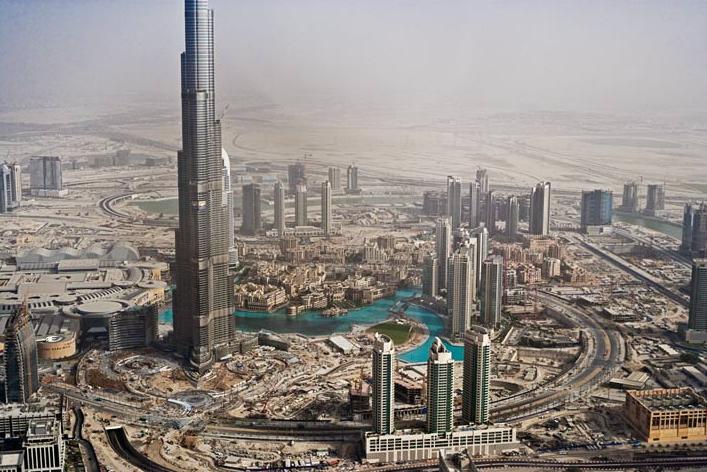
Oil transformed Dubai(迪拜) in the 1970s. The city now boasts(有[引以为荣的事物]) the world's tallest building, giant malls, and some two million residents, who depend on desalinated(去除盐分的) seawater and air-conditioning—and thus on cheap energy—to live in the Arabian desert.

Changing Seas
Rosignano Solvay, Italy
A Tuscan beach captures the textured drama of humans and the sea. The "tropical" sands aren't natural; they're whitened by carbonates(碳酸盐) from the chemical plant(化工厂), which also discharged(排放) mercury(汞) until recently. The plant converts(转变) salt extracted from the sea into chlorine(氯气) and other essential(必不可少的) products. Fossil fuels(化石燃料) power(向……提供动力) such transformations; worldwide, the CO2 from smokestacks(大烟囱) and tailpipes(排气管) is slowly acidifying(酸化) the ocean, threatening marine(海洋的) life.
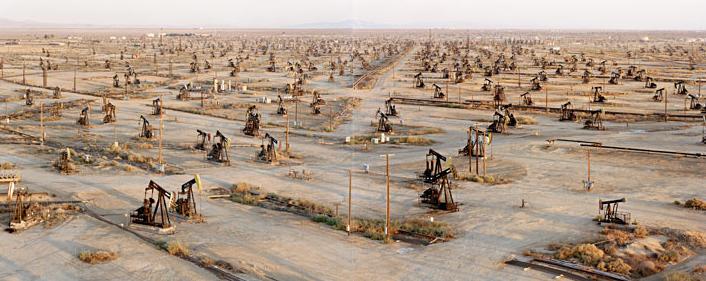
The Oil Century
South Belridge, California
Discovered in 1911, this field pumped on as cities were rebuilt for cars and as ancient petroleum(石油) molecules(分子) were spun into household products such as plastics(塑料), cosmetics(化妆品), and pharmaceuticals(医药品). South Belridge today produces 32 million barrels(桶) a year—enough for nine hours of world demand. In this century the world's supply may plummet(骤然跌落).
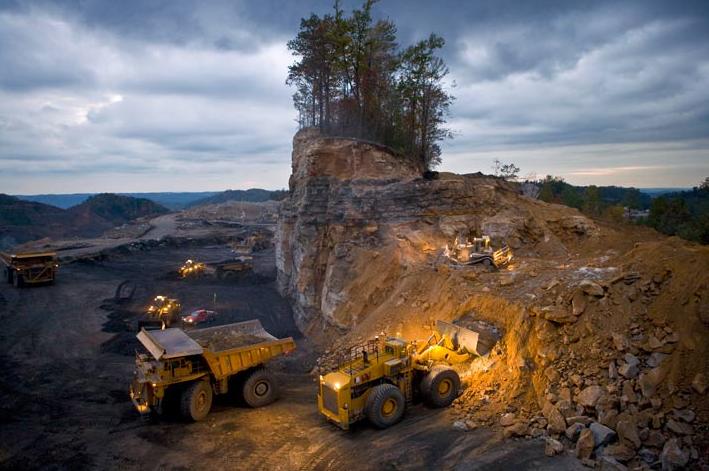
Moving Mountains
Kayford Mountain, West Virginia
As oil companies drill deeper for offshore(近海的) oil, mining(采矿) companies work 24/7 to level Appalachian peaks for coal, which supplies half of U.S. electricity. This summit vanished in a day. Some 470 have been erased since the 1980s; the waste often buries streams. Mountaintop removal recovers just 6 percent of a coal deposit.
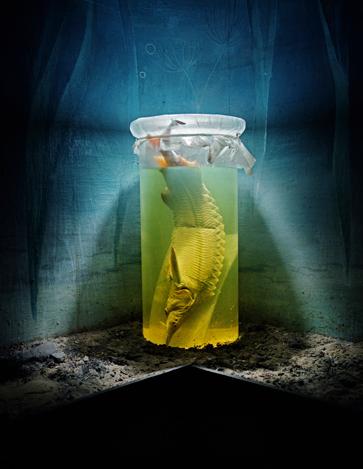
The Sixth Mass Extinction
Museum of History, Aralsk, Kazakhstan
The ship sturgeon(鲟鱼) is near extinction(灭绝), and it's already gone from the Aral Sea(咸海); water diversion(分水) for cotton farming reduced what was once the world's fourth largest lake to a dust bowl. In the past half billion years asteroid(小行星) impacts and other natural events have caused five catastrophic mass extinctions of plants and animals. Humans may be causing a sixth.
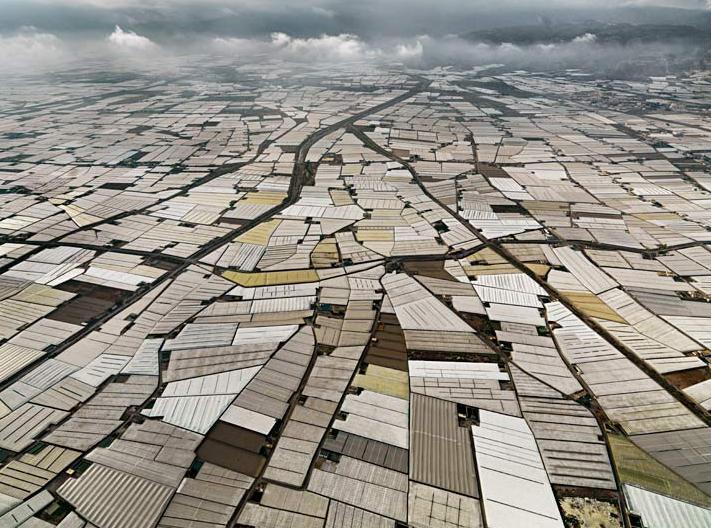
Industrial Farming
Almería Province, Spain
On the arid plains of southern Spain, produce is grown under the world's largest array of greenhouses(暖棚) and trucked north. Greenhouses use water and nutrients efficiently and produce all year—tomatoes in winter, for instance. But globally the challenge is grain and meat, not tomatoes. It takes 38 percent of Earth's ice-free surface to feed seven billion people today, and two billion more are expected by 2050.
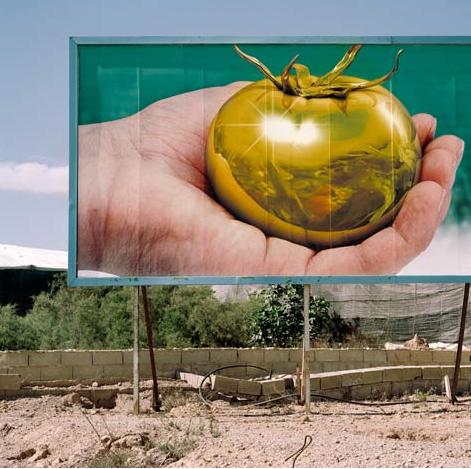
Food Chemistry
El Ejido, Spain
Fertilizers(化肥) and pesticides(杀虫剂) make possible the high yields and flawless(完美无瑕的) produce celebrated by this Spanish billboard. The side effects are far-reaching—nitrogen(氮) runoff(流失) from fertilized land, for example, causes dead zones at the mouths of rivers worldwide.
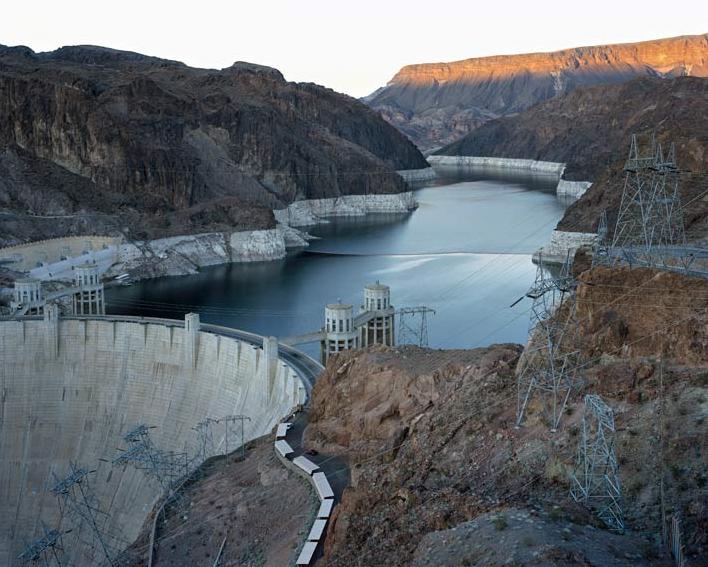
A Dammed World
Hoover Dam and Lake Mead, Nevada
Dams tame(驯服) floods, water crops (and people), and generate 16 percent of the world's electricity, carbon free. They have also displaced(驱走) 40 to 80 million people and destroyed river ecosystems(生态系统). More than half the world's large rivers are now dammed. Some, like the Colorado, are tapped out. Persistent(持续的) drought(干旱) has left a "bathtub ring" in Lake Mead, which supplies water to much of the Southwest.

Alien Invaders
Akron, Alabama
Kudzu, a fast-growing Asian vine(藤), has smothered(使窒息,扼杀) millions of acres in the United States since it was planted in the 1930s to control erosion(腐蚀). Exotics(从外引进的事物) spread by humans are a global threat to biodiversity(生物多样性). Most of the species on the U.S. threatened and endangered lists are there in part because of foreign invaders.
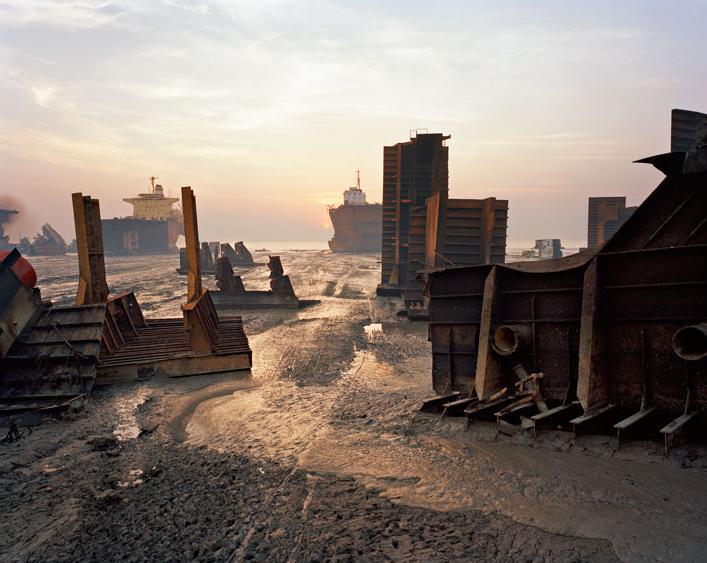
A Tide of Waste
Chittagong, Bangladesh
Ship breaking delivers jobs to Bangladesh(孟加拉) and a wealth of scrap metal—but also asbestos(石棉), PCBs(印刷电路板), and other toxics(有毒物质). Though waste recycling generally is booming, so is waste production. In American cities in recent decades, the two trends have just about offset(抵消) each other.
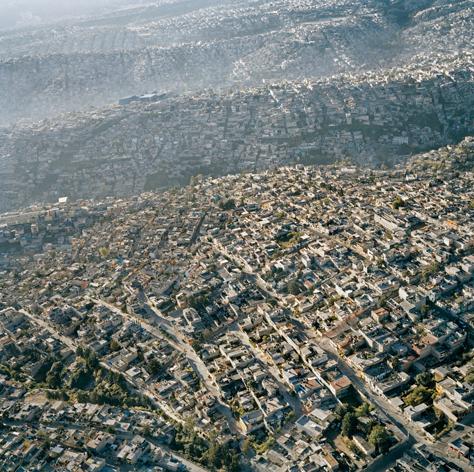
Urban Supersprawl
Mexico City, Mexico
Some 20 million people live in Mexico City, the world's fifth largest metropolitan(国际大都会) area. In 1800 the urban fraction of the global population was 3 percent. Today it is 50 percent and rising. In crowded shantytowns(漏屋区), the need for clean water and sanitation(卫生系统) is urgent. But urbanization(都市化) has an upside: Per capita, cities use less energy and pollute less than rural areas.

